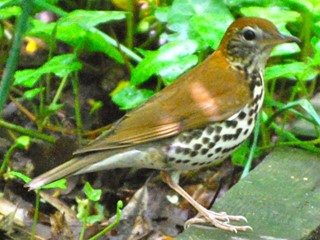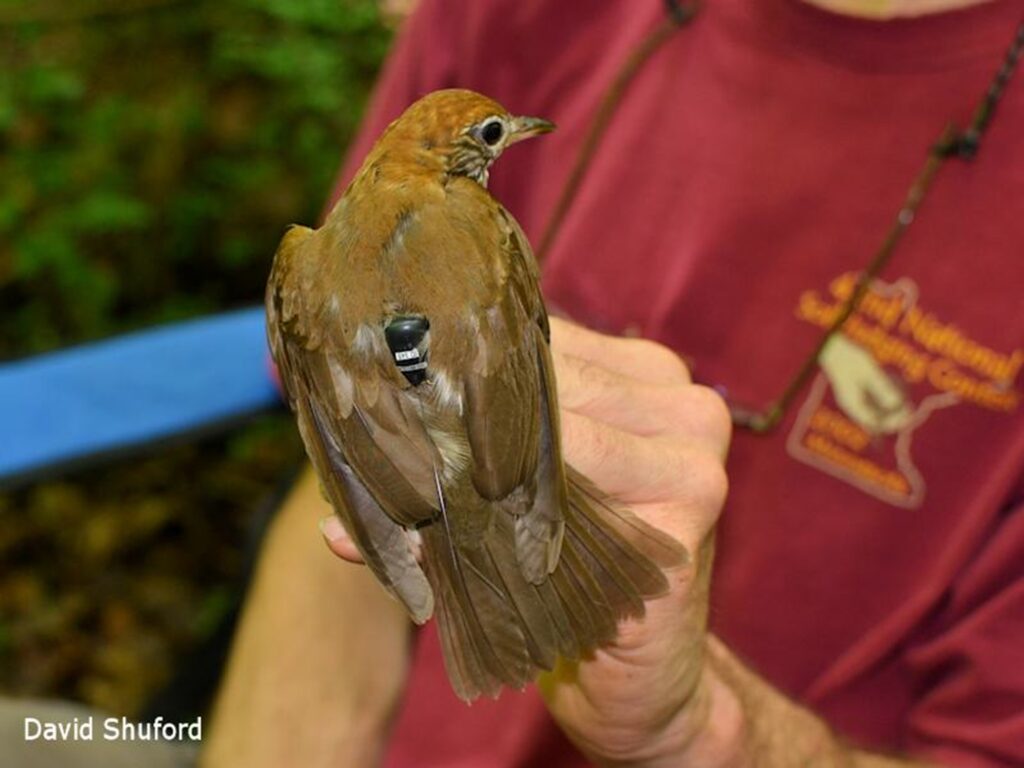
The Wood Thrush is a species of concern: its numbers have dropped by 40 percent or more in recent years. Fragmentation of its forest habitat appears to be the major reason, not only in the eastern U.S. where they nest, but also where they winter in Central America and where they stop along the Atlantic Flyway during migration. Cowbird predation likely is another factor. We still have breeding populations at local parks such as Historic Bethabara and Reynolda Gardens. In fact, surveys at Bethabara in 2009 and 2010 revealed several Wood Thrush breeding territories.

National Audubon Society’s International Alliances Program connected us with Belize Audubon Society, which manages several national parks and sanctuaries where Wood Thrushes spend half the year. Forsyth Audubon developed a habitat conservation partnership with Belize Audubon Society, wherein members of Forsyth Audubon traveled to Belize to work directly with Belize Audubon park wardens and staff who had been collecting data about the Wood Thrush for many years.
Forsyth Audubon members helped survey a preserve near Belize City, train the wardens and staff in entering survey data into eBird, and provide advice on how to make their sanctuaries more eco-tour friendly through creation of nature trails and educational signage. (Photo: Belize partners by Phil Dickinson.)

The chapter partnered with IAP and scientists from the Smithsonian Institution in a project where they captured about 20 birds in breeding locations in our Piedmont area and attached GPS locator tags.
The tags used did not transmit data, so it was necessary to recapture the birds in 2015 to collect any tags from which to gather the data. In 2015, only two birds captured carried the GPS backpack. When the data was reviewed, one of those birds did spend the winter in Belize, providing valuable data to the team.
From this project, FA members created a 4th grade-level student curriculum presentation tied into the wood thrush connection. EditWood Thrush Project